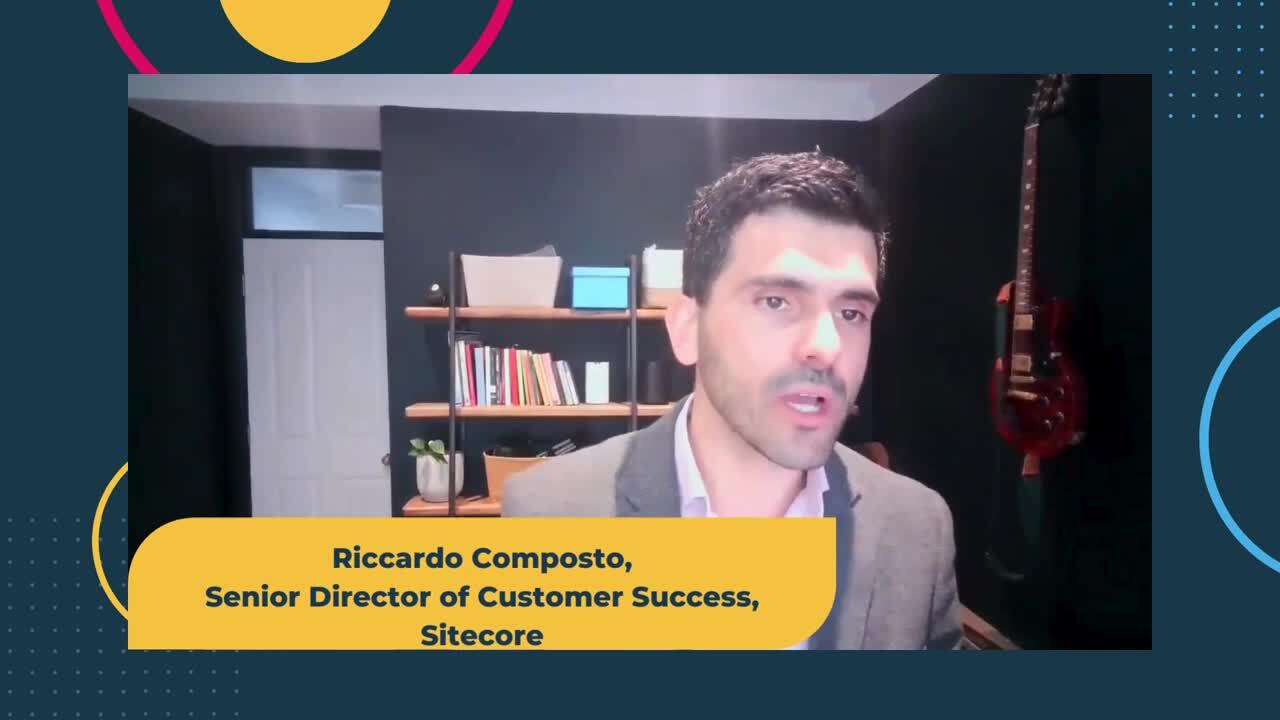This is a very exciting time to be in the Customer Success (CS) profession. As economies and customer expectations shift and evolve, we as CS professionals need to evolve with them.
One main topic of discussion that is getting a lot of attention in the CS space is how Customer Success can be more of a revenue-generating department. There are a lot of ideas being thrown around as to how this can be done. It all comes down to Customer Success Managers (CSMs) owning certain revenue metrics: expansion revenue, churn, renewals, etc.
But how do you get started in setting your CS team up to be a revenue-generating powerhouse? How do you determine what revenue metrics your CSMs prioritise?
These questions, plus more, were answered by Riccardo Composto, Senior Director of Customer Success at Sitecore, during our recent webinar, Transforming CS Into a Lead Gen Powerhouse . Riccardo and Harri Carroll, CSM at Gainsight, dove into why Customer Success should own a pipeline metric, and how any organization can implement that KPI for CS. Here are some of the key takeaways from their conversation.
The CSM’s Role in Generating Leads
At a surface level, the role of Customer Success is to deliver on customer’s desired outcomes while creating a great customer experience. But if we dive deeper into that, we find that delivering on these outcomes and creating a great experience means playing a key part in business growth.
Gone are the days when CS was solely focused on customer satisfaction.
Does this mean that your CSMs should be hitting the phones to make cold calls and prospect along with your Sales Reps? No. What it does mean is that Customer Success should be more commercial than it has been up to this point.

Customer Success Qualified Leads (CSQLs) should be a metric that drives better collaboration between your CS and Sales teams. The more these two departments can collaborate and prioritise CSQLs, the more revenue your company can generate. Invesp conducted a study and found that the probability of selling to an existing customer has a 60%–70% success rate, while the success rate for a new prospect is 5%–20%. They also were able to determine that existing customers are 50% more likely to try new products and spend 31% more when compared to new customers.
CS leaders should prioritise training and development so each CSM knows how to identify expansion opportunities, facilitate the conversation, and get Sales involved when necessary.
Using Customer Insights to Drive Revenue
Riccardo emphasised the importance of using customer insights to identify expansion opportunities and, in turn, drive more revenue. It all starts with listening to your customers. When you establish this two-way dialogue with your CSMs and your customers, amazing things can happen.
To set the groundwork for this, two main things need to be implemented immediately after the client is handed over to the CSM:
- A cadence call needs to be set and each call should be value-driven. Not a simple “check-in.”
- To ensure each call has value, the CSM should work with the client to create a success plan. The foundation of this plan is a list of mutually agreed-upon goals that help the client achieve success with the product or service.
Once the cadence call is set and the success plan is created, your CSMs will have a North Star to look to and gain valuable customer insights along the customer journey. These insights can lead to finding more expansion revenue, improving customer retention, and predicting customer churn.
Riccardo and his team use Gainsight PX to monitor product adoption as well as Salesforce and Power BI to regularly engage with and monitor the health of their customers. These three tools work together to create a holistic view of their customer’s lifecycle. They also help their CSMs have more informed, data-driven conversations with customers, which leads to better insights.
Proving the ROI of CS
When it comes to proving the ROI of Customer Success to your executive board, it’s all about the money. This is even more of a reason why CS should own some of the revenue.
Riccardo highly encouraged the importance of CSMs being measured on pipeline-related and conversion rate metrics. He also emphasized the use of CSQLs and how they should be a good percentage of the sales pipeline. Revenue lost from churn is never fun to see. But if your CSMs know how they can drive better conversion rates and fill the pipeline for sales, the churn revenue can be heavily mitigated and offset exponentially.
Learn More
Are you ready to turn CS into a profit engine? Check out the full webinar, Transforming CS Into a Lead Gen Powerhouse.
